SIM card sizes explained: Standard, Micro and Nano
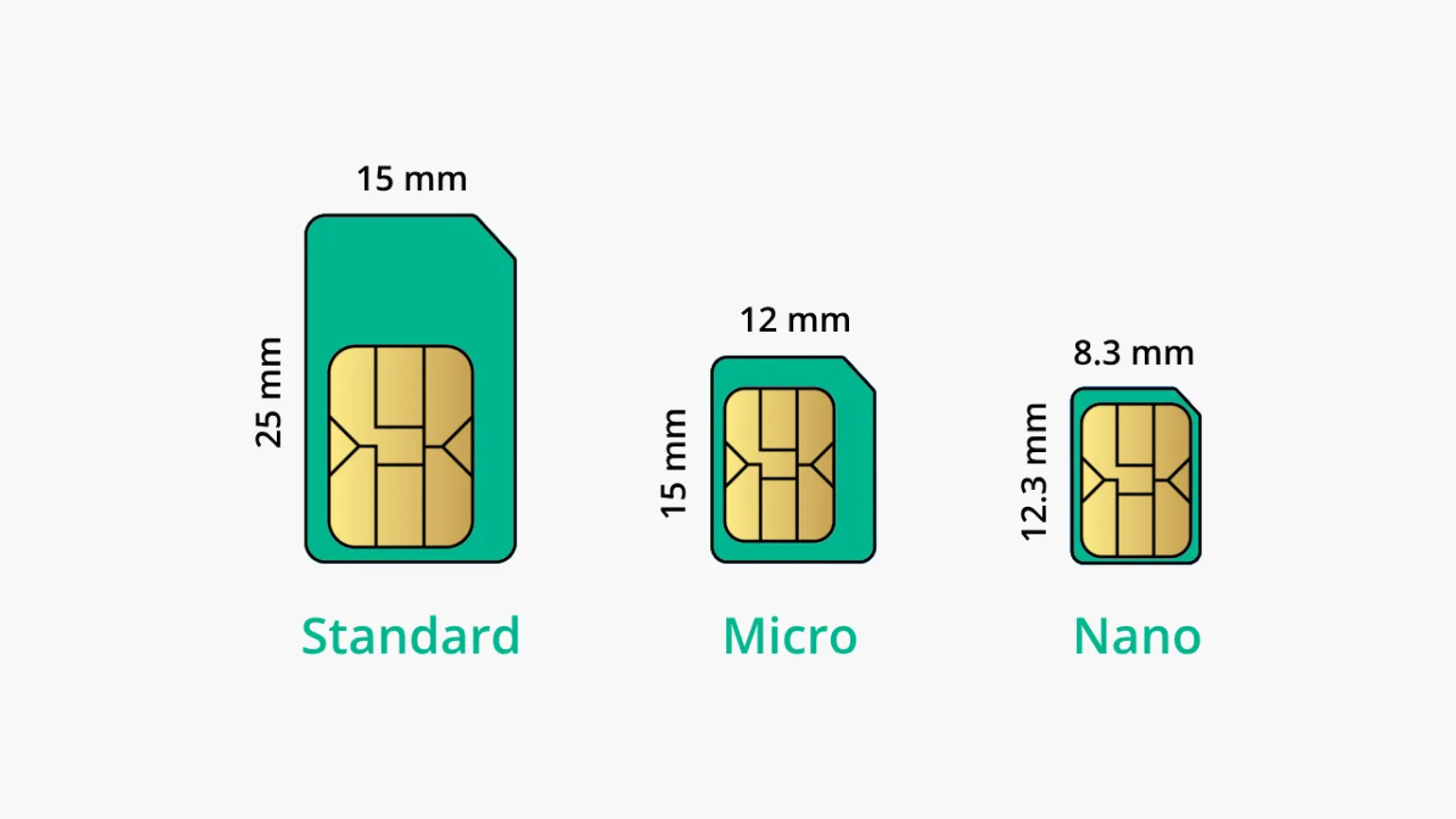
You need to have a SIM card in order to use your phone with your network. However, choosing the correct SIM card can initially be slightly confusing, with 3 different sizes to pick from: standard, micro and nano.
Nano SIM cards, the smallest of the 3, are used by the majority of phones sold today. They were first introduced in 2012, however as adoption takes time, nano SIM cards didn’t become the default for most phones until around 2016.
Despite this, most networks today usually issue a standard SIM card size when you join them. However, upon close inspection, you’ll notice these are actually a special type of SIM called a combi SIM - they contain cutouts, meaning you can pop out a micro SIM or nano SIM by applying slight pressure with your fingers. This is possible because the chip (the bronze/gold circuit board) is the same size for all SIM cards - it’s just the surrounding plastic which is different in size.
It’s therefore possible to use an adaptor to convert a nano SIM to a micro or standard SIM, or a micro SIM to a standard SIM. These adaptors can be purchased for £1 on eBay or Amazon. They’re cheap since they’re essentially just a bit of plastic - there’s nothing technical about them.
What is a standard SIM card?
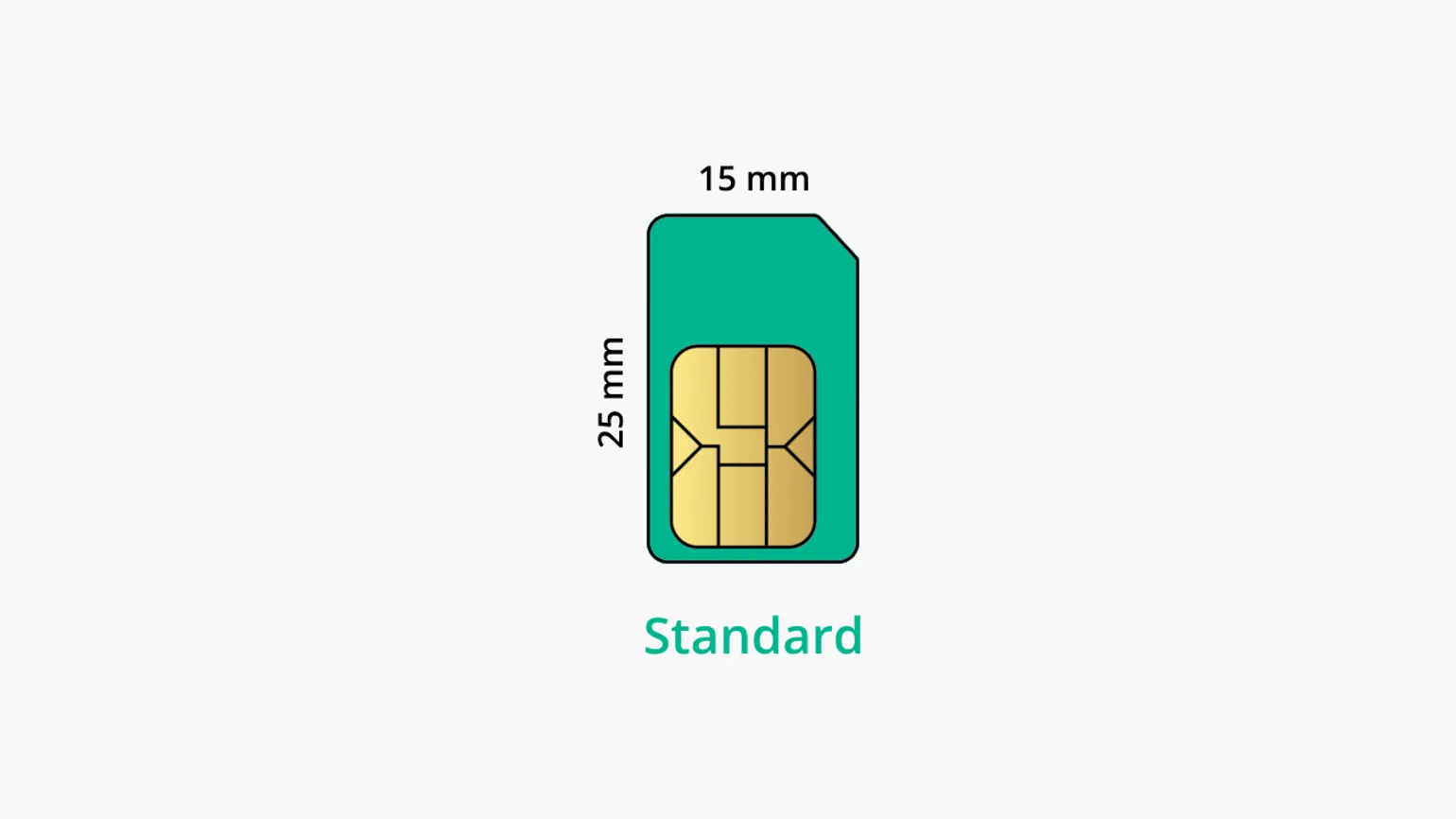
Standard SIM cards are the largest of all SIM cards, measuring 25 x 15 x 0.76 mm.
First introduced in 1996, standard SIM cards have not been used in over a decade.
The last iPhone to use a standard SIM card was the iPhone 3GS, released in June 2009.
What is a Micro SIM card?
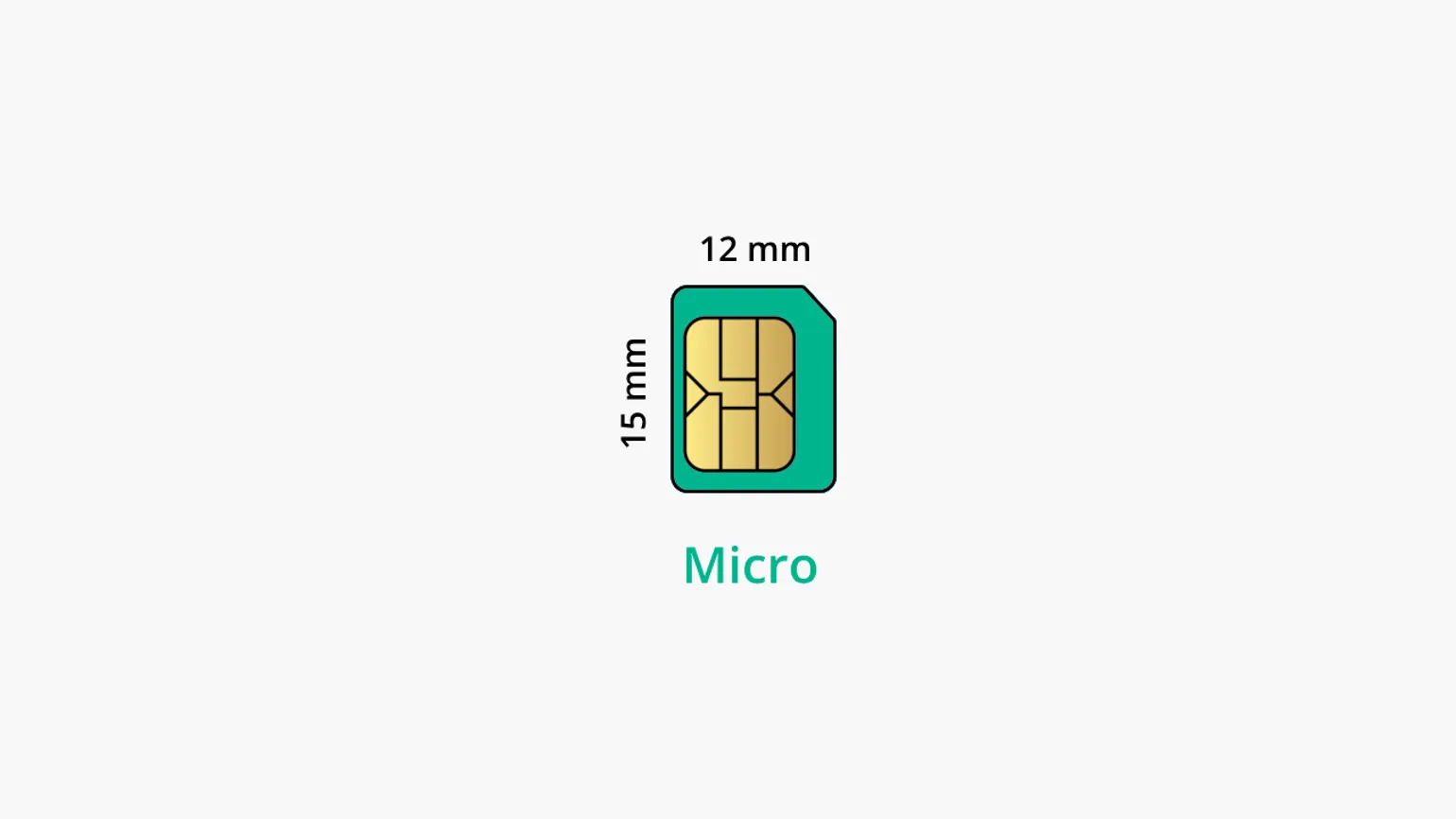
Micro SIM cards are roughly 50% smaller than standard SIM cards, measuring 15 x 12 x 0.76 mm.
Although introduced in 2003, they weren’t popularised until the release of the iPhone 4 in 2010.
However, micro SIM cards are extremely rare these days, with most new phones opting for the even smaller nano SIM card.
What is a Nano SIM card?
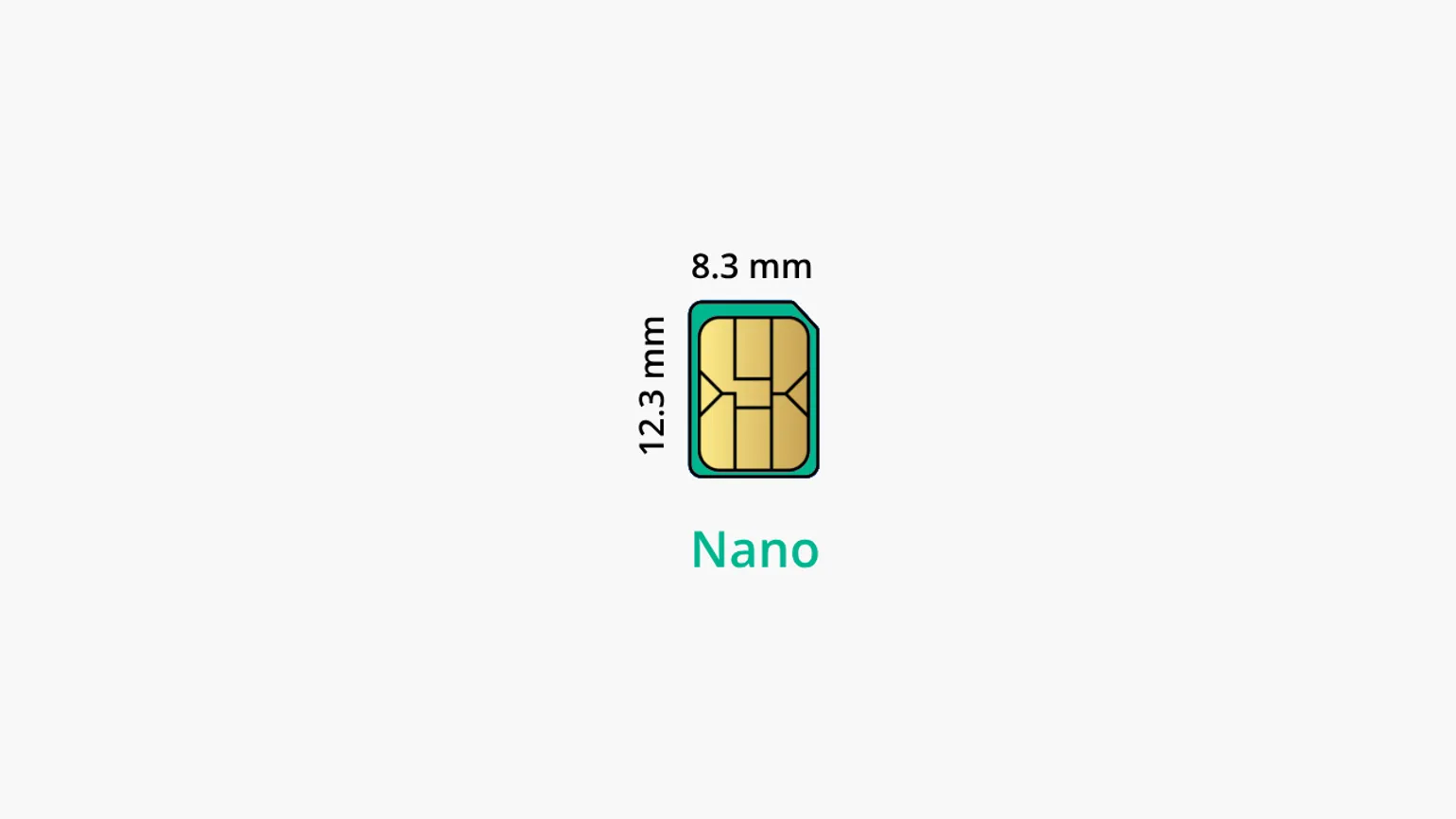
Nano SIM cards are used by most phones today and are the smallest of the bunch, measuring 12.3 x 8.8 x 0.67 mm. They are 47% smaller compared to micro SIM cards, and 75% smaller compared to standard SIM cards.
The iPhone 5, released in September 2012, was the first major device to adopt a nano SIM card. Other phones and manufacturers followed shortly after.
If you have a phone sold in the last 5 years, it likely uses a nano SIM card.
What is an eSIM?

eSIM, or embedded SIM, is a digital SIM card that simplifies the process of joining or switching networks, by eliminating the need for a physical SIM card. To activate an eSIM, you just need to scan a QR code with your phone's camera app, bypassing the wait for a traditional SIM card to be delivered in the post.
Approximately 50% of UK networks, including the four major ones (EE, Vodafone, Three, O2) and some MVNOs, currently support eSIM technology. However, it will take at least a decade before eSIM completely replaces physical SIM cards.
Which SIM card size will my network send?
Most networks will send combi SIM card when you join them or request a replacement.
A combi SIM is a standard sized SIM card, but with cutouts to pop out a micro SIM or nano SIM, by applying a slight amount of pressure with your fingers.
This is possible because the chip (the bronze/gold circuit board) is the same size for all SIM cards - it’s just the surrounding plastic which is different in size.
By using a cheap adaptor (£1 or eBay and Amazon), nano SIMs can be converted to micro or standard SIMs, and micro SIMs can be converted to standard SIMs.
Which SIM card size will I need?
The only definitive way to find out which SIM card size you will need for your phone is to check the instructions provided by the manufacturer.
However, most modern smartphones sold in the last 5 years will use a nano SIM card.
There are a few exceptions to this rule. Phones tailored for those over 65 years old, such as basic feature phones, may utilise micro SIM cards due to their enhanced visibility and easier removal.
In addition, if you have a phone older than 5 years, there is a chance it may use a micro SIM card.
It’s very unlikely any phone sold in the last 10 years will use a standard sized SIM card. The last iPhone to use a standard SIM card was the iPhone 3GS, released in June 2009.
Apart from size, are there any differences between SIM cards?
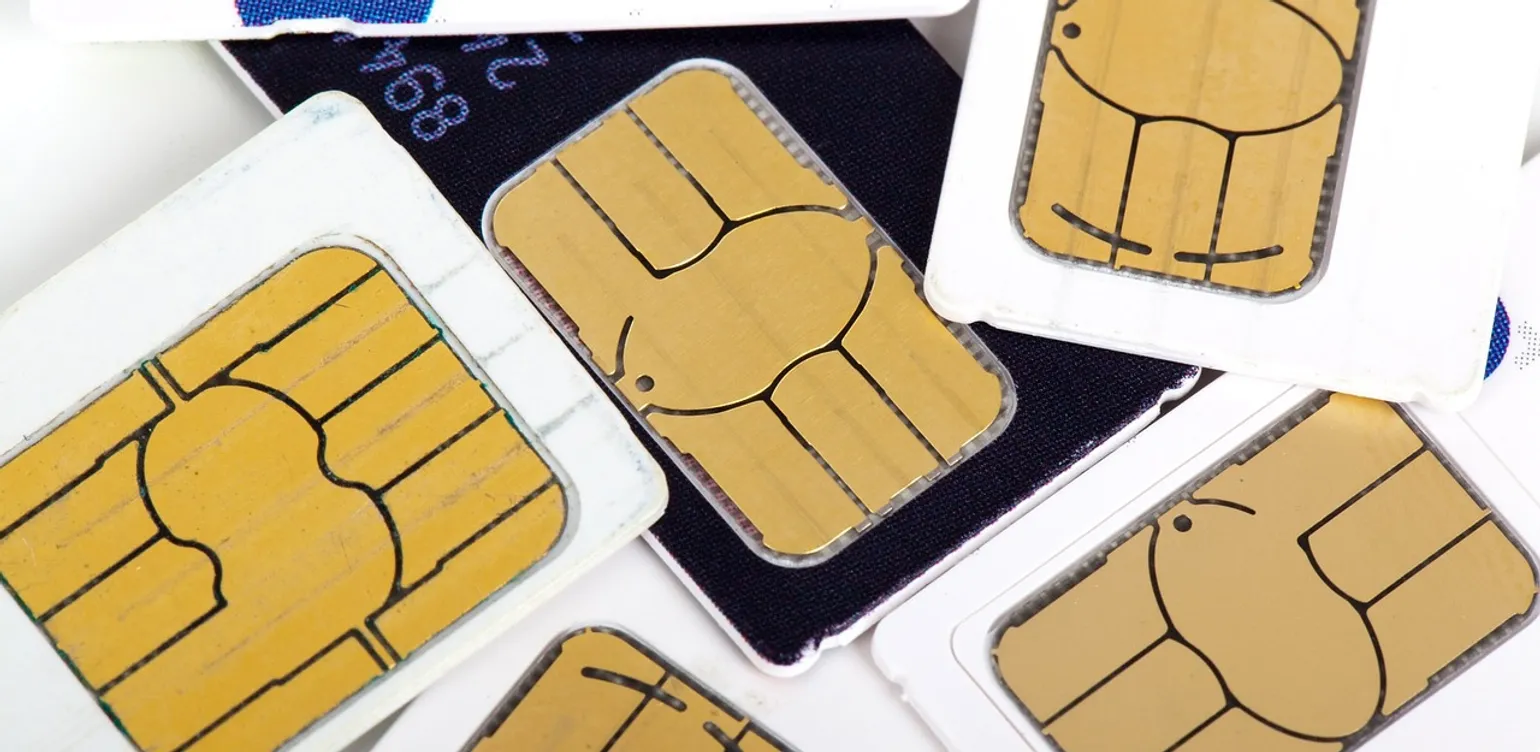
Generally, there are no differences between SIM cards. The size of the chip (the bronze/gold circuit board) is the same size for all SIM cards - it’s just the surrounding plastic which is different in size.
However, there are two negligible differences worth mentioning.
If you have an old SIM card, it may not support 5G. In addition, standalone 5G technology (currently only used by Vodafone and O2 with select phones) may require a special SIM card. Regardless, in both cases, you can simply request a free replacement SIM card from your network by contacting them.
Secondly, SIM cards can vary in memory, ranging from 8 KB to 256 KB. This can determine how many contacts and numbers you can store on the SIM card. However, this is outdated technology and no longer used - contacts today are instead stored on the phone’s memory or in the cloud (iCloud, Samsung Contacts, Google Contacts, etc).
Can I get a new SIM card if I have the wrong size?
Yes, you can get a free replacement SIM card by contacting your network. Most networks will issue a standard sized SIM card, with cutouts to pop out a micro or nano SIM card.
You can contact your network online or by visiting a store (if available).
Alternatively, you can use an adaptor to convert a nano SIM card to a micro or standard SIM card, or a micro SIM card to a standard SIM card. Such adaptors can be purchased on eBay and Amazon for £1.
In addition, you can get a SIM card cutter for around £10 on Amazon to make a smaller SIM card, however we don’t recommend these. It’s easy to accidentally destroy or damage a SIM card when using such cutters.
How can I insert a SIM card?
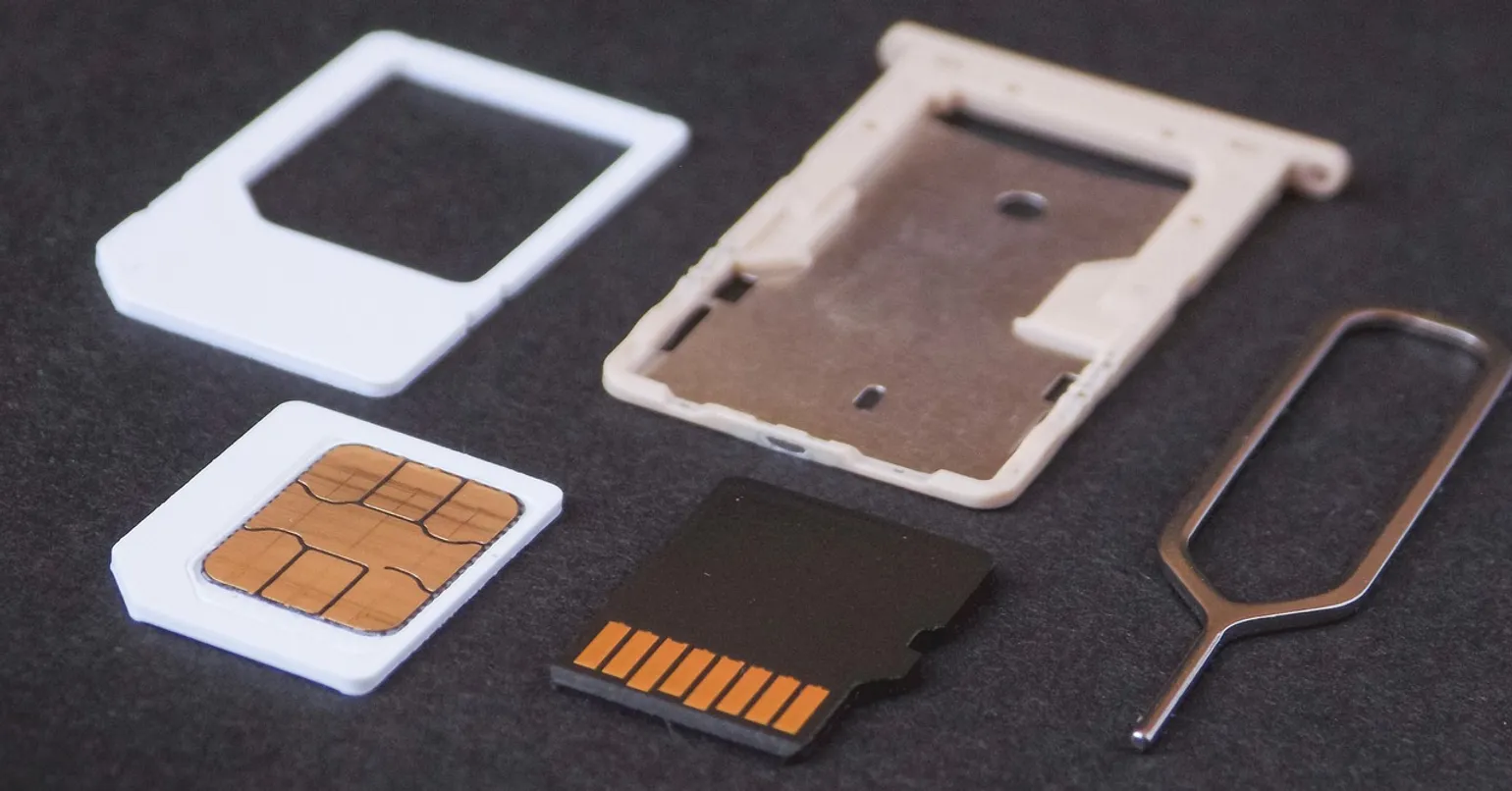
Inserting a SIM card into your device involves a few careful steps. The process can slightly vary depending on your phone's make and model, but here's a general guide:
- Turn off your phone
- Open the SIM card tray by carefully inserting the pin (supplied with your phone, but a safety pin will do) into the small hole on the side of your phone, beside the SIM card tray. If you have an older phone, the SIM card slot may be behind the removable battery instead
- The SIM card tray should pop out when applying a slight amount of pressure to the hole
- Place and position your SIM card within the tray, making sure it's the right way up
- Insert the SIM card tray back into your phone
- Power your phone back on
FAQs
What are the dimensions of SIM cards?
- Standard SIM: 25 x 15 x 0.76 mm
- Micro SIM: 15 x 12 x 0.76 mm
- Nano SIM: 12.3 x 8.8 x 0.67 mm
| Type | Length (mm) | Width (mm) | Thickness (mm) |
|---|---|---|---|
| Standard SIM | 25 | 15 | 0.76 |
| Micro SIM | 15 | 12 | 0.76 |
| Nano SIM | 12.3 | 8.8 | 0.67 |
Where can I get a SIM only deal?
You can find the best SIM only deals on our website, where we compare the cheapest deals from thousands of plans.
What is the most common SIM card size?
Nano SIM cards are the most popular SIM card size, used by most phones sold in the last 5 years.
Why have SIM cards gotten smaller?
SIM cards have gotten smaller in order to save space inside smartphones. The plastic casing around the chip has been reduced to free up space for other components, like bigger batteries and more powerful processors.
Do I need a different SIM for phones, tablets and laptops?
No, SIMs can be used and swapped between different device types. However, SIM card plans sold for tablets and laptops are likely to only include a data allowance, without any texts or minutes.
Do I need a special SIM card for 5G?
Most new SIM cards support 5G by default. However, if you have an old SIM card, it may not support 5G.
You can test your SIM card by pairing it with a 5G phone. If you are not able to receive a 5G signal, you will have to contact your network for a free SIM card replacement.
In addition, standalone 5G technology (currently only used by Vodafone and O2 with select phones) may require a special SIM card, which can also be requested for free by contacting your network.